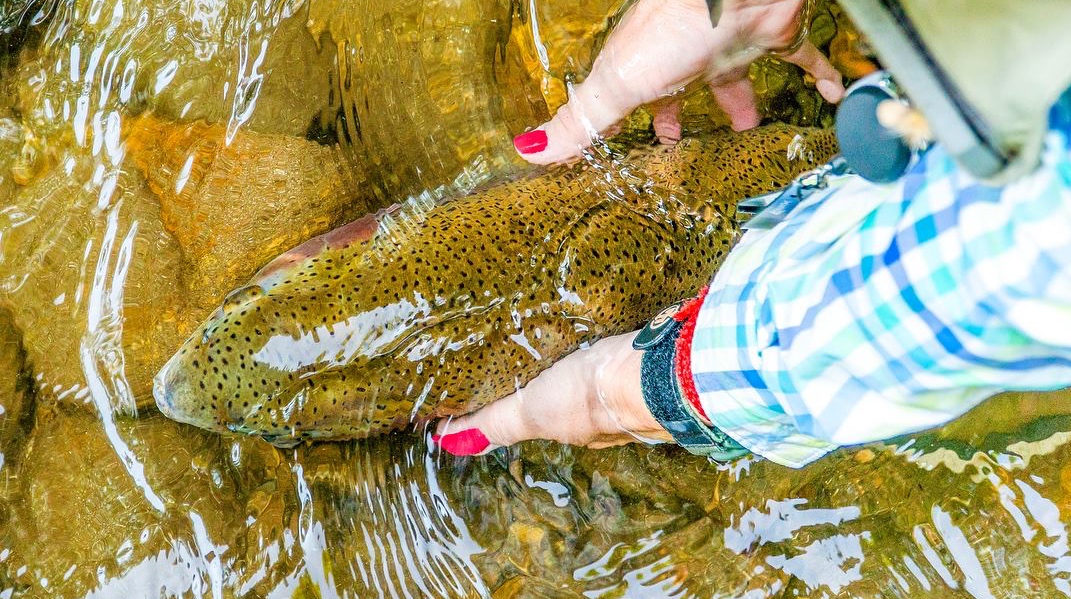Summer traditionally is a time to enjoy the outdoors. Anglers enjoy the longer days. Trout? Not so much.
Of course, this scenario depends on geography. Western trout thrive; southeastern and mid-atlantic trout struggle with summer’s swelter.
But this is not to say that non-western fishermen should hang up their waders in August. Quite the contrary. There are fishing opportunities; you just have to know when and where to go.
Here are a few pointers.
Go Early
Set your alarm clock. Try to be on the water at sunrise — or shortly thereafter. As the air temperature rises, so does the water temperature. Mornings are cooler than afternoons.
When the water temps hit 70 degrees, trout become lethargic and feed very little. I try to shut down my fishing by 10, 10:30 a.m., sometimes earlier, if it’s warmer than usual.
Hoof It
Lower-level streams tend to be warmer. If you want to find cooler water, find streams at the highest elevations possible. That might mean hiking a couple miles. The key is to find water with temperatures consistently in the 60s.
Once there, fish the shade. Trout like cover from aerial predators. Plus, they can feed on the terrestrials — ants, beetles and grasshoppers — that fall into the stream.
Fish the Foam
When I first started mountain trout fishing, I fished the slower water that formed the tail of the pools. I simply assumed trout would have to work far too hard in the faster water. Generally, that’s true. However, in the summer, trout seek the oxygen of the riffles. It’s not uncommon to see them stack up in these spots to find comfort.
Go Subsurface
I started out as a diehard, damned-the-torpedoes dry-fly snob. That rigid approach softened after enduring many fishless days one summer.
Insect activity slows to a crawl after spring ends. Add in the fact that fish want to stay cool, and you can understand the need to nymph fish. This can be as simple as indicator fishing or you can take it a step further with euro-nymphing. TFO’s Drift rod is perfect for this tactic.
Find a Tailwater
Tailwater fisheries are known for keeping the water at a cold, consistent temperature year round. When the natural streams are too warm to fish, you can usually find a tailwater with water temperatures in the 50s. The hatches are usually consistent and productive, and the fish are usually willing to eat. The only downside to tailwaters are the releases. The Nantahala, near where I live in Western N.C., is controlled by Duke Energy, which tailors the releases to the rafting companies that use the river. The water usually runs high during the day, but is more suitable for wading early in the morning and late in the afternoon.
Check with your local electric company for a release schedule before planning a trip. And if you do get caught during generation, seek the safety of the shoreline. Better safe than sorry.
If you don’t have access to a tailwater, find a spring creek, which offers ground-fed cold water year round. Virginia’s Mossy Creek and Montana’s DePuy Spring Creek, for instance, are known for their year-round prowess.
Summer fishing can be rewarding if you plan properly. Any other suggestions? Let us know on one of our social media pages.







